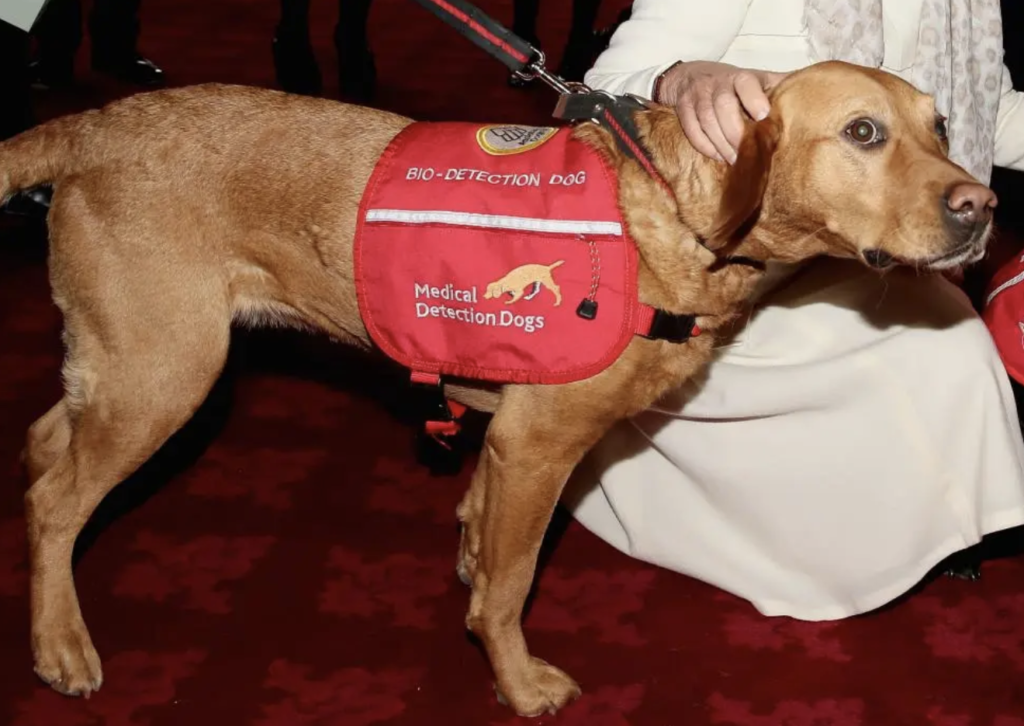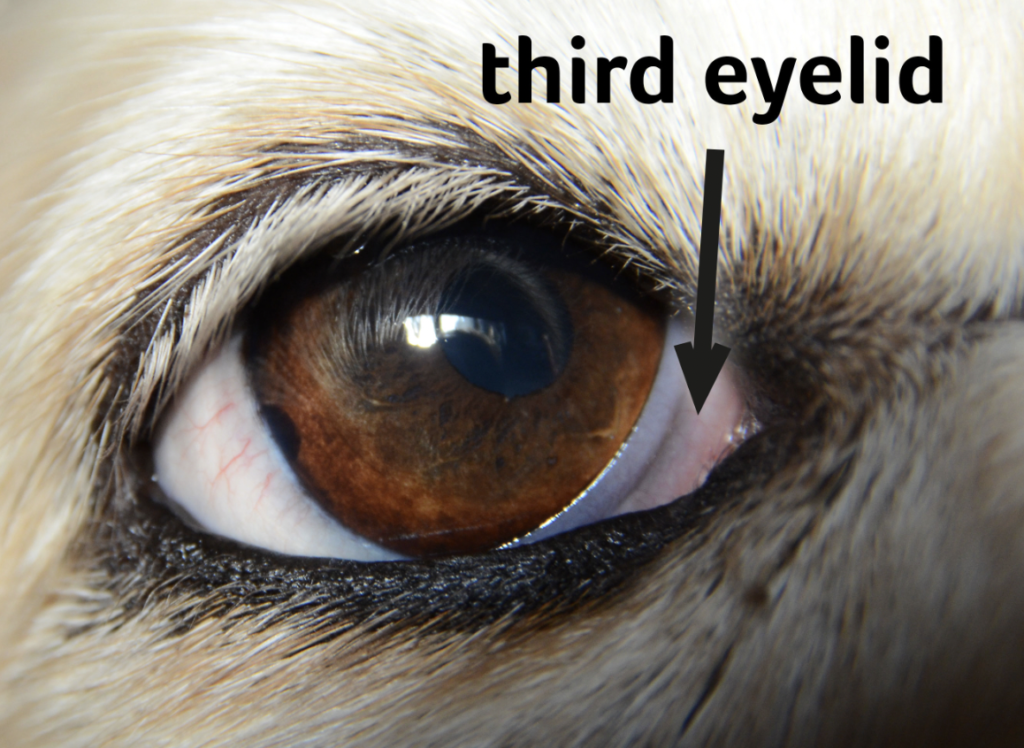Enrichment & Fun News & Entertainment
15 Facts About Dogs For Dog Lovers in 2023

We literally can’t get enough of dogs, so to start 2023 with a bang, we’ve rounded up some of our favorite dog facts!
If you’re a dog lover, try whipping these facts out at the dog park to impress other dog people and show off your chops.
1. Dogs Can Sniff Out Medical Issues
Service dogs don’t just perform tasks and guide their humans—they can sniff out medical emergencies, too! Commonly called medical alert dogs, these pups can be trained to detect changes in blood sugar (diabetes alert dogs), oncoming seizures or bouts of narcolepsy, changes in blood pressure, and more. Some medical alert dogs are even trained to smell cancer.

Medical alert dogs are trained both to alert their owners, and to perform responsive behaviors like deep pressure therapy, searching for help, or keeping the area around their owner clear for their safety.
2. Human Yawns Are Contagious for Dogs Too
You know when you see someone yawn, and you can’t help but yawn, too? Well, yawns are also contagious for dogs! Dogs will yawn sympathetically with both humans and other dogs.

It’s important to know that dogs also use yawning as a form of body language communication. Yawns are known as “calming signals,” something dogs use to tell each other to relax, to show that they aren’t aggressive, or to signal submissiveness. Dogs usually use yawns when they are stressed or overwhelmed.
3. Dogs Aren’t Colorblind—They See Blue & Yellow
For decades, people thought that dogs were completely colorblind and saw only in shades of gray. Today, we know that dogs don’t just see gray, they also see shades of blue and yellow!
Here’s what the world might look like through a dog’s eyes according to the American Kennel Club.

On the left is what humans see, and on the right is what dogs see!
4. Dogs Know the Impact of “Puppy Eyes“
Have you ever wondered if your dog is trying to manipulate one more treat out of you with their puppy dog eyes? Well, they probably are.

Dogs are especially adept at reading our reactions and will lean into certain behaviors to get the desired result. Because humans react so strongly to puppy dog eyes, dogs are more likely to break out this behavior when they want something. Dogs don’t make puppy dog eyes when we aren’t paying attention, and very clearly use this behavior to communicate with their humans.
5. Dogs Can Understand Up To 250 Words…Maybe
Whether or not dogs can truly understand human language is another topic that is surrounded by controversy and debate. Some trainers and behaviorists claim to have taught their dogs hundreds of words, like in the case of Sampson the Border Collie, winner of Britain’s Most Talented Pet.
Another example of a dog in this category is Bunny, the Sheepadoodle who has gained TikTok fame by seemingly having conversations with her owners via a series of buttons.

Those that are more skeptical of these seemingly genius pups believe that this is likely a case of the Clever Hans Effect. Clever Hans was a famous horse whose owner claimed to have taught him to do math. Hans would perform simple mathematics for paying audiences, tapping his hooves to give answers to the equations.
In truth, Clever Hans was simply responding to his handler, and could only answer questions his human knew the answer to. Skeptics of dogs like Sampson and Bunny suggest that, rather than having a complex understanding of language, these dogs are simply following the lead of their humans, who are in turn inferring linguistic meaning from their interactions.
6. Dogs Get Jealous Too
We have learned a lot about canine behavior in the past decade, including that dogs can feel complex emotions like jealousy! When your dog looks resentfully at you petting another dog, snaps at a dog trying to take their bone, or steals someone else’s treat, they’re probably feeling jealous.
7. Dogs Can Dream Like Humans

Dogs, and other mammals like rats, have vivid realistic dreams like humans! Research shows that dogs experience brain activity while sleeping that is similar to brain activity during play or exciting events. With this in mind, dogs may indeed be reliving their day, or chasing squirrels in their dreams.
8. Dogs Have Between 100–300 Million Scent Receptors

Dogs use their sense of smell to interact with and understand the world around them, just like we use our vision. Dogs have sophisticated noses, and some highly adept breeds like Bloodhounds have as many as 300 million scent receptors!
To give you some idea of how powerful a dog’s nose is, humans have only 5-6 million scent receptors in our noses.
9. Evidence Gained from Bloodhound Scent is Admissible in Court

The Bloodhound is the first and only dog breed whose trailing evidence was made admissible in a U.S. court of law. Participating states require specific conditions be met and procedures be followed to consider using Bloodhound trailing evidence during a trial.
Incredible trackers, Bloodhounds are by far the most successful tracking dogs. Radar—a Bloodhound from Colorado—has helped solve countless cases, and assisted in identifying more than 20 murderers with his tracking evidence.
10. Dogs Can Sense Human Emotions

Your dog knows how you feel! Dogs can read facial expressions and gestures, changes in body language, and can even identify how we are feeling through our tone of voice. Dogs can successfully identify emotions like fear, anger, sadness, and happiness.
11. Tail Wags Can Have Different Meanings
Don’t let a wagging tail fool you, tail wags can have different meanings depending on speed and placement, and in combination with other body language behaviors.

For example, a tail that is straight up in the air and wagging very gently probably means your dog is alert, agitated, and unsure of their circumstances.
On the other hand, a neutral tail held loosely and wagging freely tells you that your dog is feeling happy and relaxed.
12. Dogs are Sensitive to the Earth’s Magnetic Field
Some animals have innate magnetosensitivity—meaning they align naturally with the Earth’s magnetic field. Dogs are one of these animals, and you’ll never believe how scientists figured this out.
In a study that included 37 dog breeds, researchers observed that dogs preferred to do their business (yes, poop, and pee) with their bodies aligned along the North-South axis under specific conditions. When polar orientations changed, these behaviors were disturbed, but the dogs returned to this behavior upon a return to the calm conditions.
13. Dogs Have 3 Eyelids

Like humans, dogs have an upper and lower eyelid, but they also have a third eyelid called a nictitating membrane. This eyelid is tucked behind the lower eyelid in the corner of the eye and is a milky white/pink color. The third eyelid extends when dogs sleep, when they need extra protection (like when pushing through underbrush), and in response to injury or inflammation.
When the gland of the third eyelid becomes prolapsed, this can cause the third eyelid to protrude permanently, causing something called cherry eye.
14. Dental Disease is One of the Most Common Canine Health Problems

Dental diseases are by far the most prevalent condition seen by veterinarians, with more than 80% of dogs over the age of three displaying some level of dental decay.
Dental disease isn’t just bad for your dog’s teeth—poor dental hygiene can lead to serious conditions like heart disease and chronic infections without intervention.
15. Dogs Were First Domesticated Around 23,000 Years Ago

Recent studies using new advances in ancient DNA sequencing suggest that dogs may have first been domesticated around 23,000 years ago. The oldest known remains of domesticated dogs were found in modern-day Siberia. It is here that researchers theorize humans and wolves would have begun to live together for protection from the harsh Last Glacial Maximum.
Bonus Pet Ownership Statistics in the US
We’re having way too much fun to stop now—here are some incredible statistics about pet ownership in the U.S.
- 70% of American households own at least one pet! That’s around 90.5 million homes.
- 69 million American households own a dog, while 45.3 million own a cat.
- Labrador Retrievers are the most popular breed in the U.S., followed by French Bulldogs, Golden Retrievers, German Shepherds, and Poodles.
- Around 6.3 million companion animals enter U.S. shelters each year, of which 3.1 million are dogs, and 3.2 million are cats.
- Around 4.1 million shelter animals are adopted to new homes each year, while around 810,000 are reunited with their original owners.
- There are approximately 76,811,305 dogs in the U.S.
- Montana and Arkansas dog lovers take the cake with the most dogs in the country! In these states, approximately 52% of households own a dog.
- According to Bring Fido, Vermont is the country’s most dog-friendly state with the best dog-friendly restaurants, hotels, and entertainment.
- On average, dog owners spend $442 on dog food each year.
- Approximately 3.9 million pets are insured, a 28% increase since 2020.
- 80% of dogs are spayed and neutered in the U.S., with many states requiring owners to fix their pets.
- Collectively, Americans spend around $109.6 billion on their pets each year.
- Dog owners spend around $700-$100 per year on vet bills.
Dog Lover Fun Facts FAQs

Looking for direct answers to your dog fact questions? Here are some of the most common queries dog lovers like you have about pet ownership.
Are Dogs The Number One Pet in The World?
Yes! Dogs are hands down the most popular pet globally, with approximately 33% of international respondents confirming that they own a dog. Next most popular are cats, owned by about 23% of people globally, followed by fish and birds at 12 and 6% respectively.
How Long Do Dogs Live?
Lifespan for dogs varies pretty significantly from breed to breed, with smaller breeds living longer on average than larger breeds.
Small breeds like Chihuahuas, for example, are known to live for about 12–18 years, with some rare examples reaching ages of 20+.
Medium breeds, like Cocker Spaniels, typically live for 9–16 years. Large breeds like Labradors typically live for 8–12 years. Finally, extra large breeds like Great Danes typically live 6–10 years.
How Much Do Dogs Sleep?
The average adult dog spends as much as 50% of their day sleeping, and only spend about 20% of their time being active with the remaining 30% spent relaxing but awake.
At night, adult dogs will happily enjoy 12 hours of sleep. Dogs have shorter REM—or deep sleep—cycles than humans, and require more total hours of sleep to achieve the same level of rest and recovery. If your pooch sleeps all night and still naps during the day, don’t worry, they’re just a normal pup.
What is the Number of Dogs in the US?
There are around 76,811,305 dogs in U.S. households, shelters, and rescue groups. With around 331.9 million people, that means there are around 4 humans for every dog in the United States.
What are the Number of Different Breeds in the US?
The American Kennel Club currently recognizes 200 dog breeds, with the most recent additions being the Bracco Italiano, the Mudi, and the Russian Toy in 2022.
The earliest recognized AKC dog breeds in 1878 included the Pointer, the Chesapeake Bay Retriever, four varieties of Spaniel, and three varieties of Setter.
The FCI—the world’s largest federation of national kennel clubs—formally recognizes 356 breeds. Some examples of breeds not recognized by the AKC that are recognized by the FCI include the Korean Jindo Dog, the Valencian Terrier, and the Segugio Maremmano.
Also, you can find out about 10 Statistics on Dog Adoption in 2023 HERE!
Sources
- Scientific American
- American Kennel Club
- Nature
- American Psychological Association
- The Telegraph
- The New York Times
- National Library of Medicine
- CNN
- OJP.gov
- AKC/Realistic Dream
- AKC/Scent Receptors
- Office of Justice Program
- AKC/Bloodhound
- AKC/Dog can hear human emotion
- VCA
- Frontiers in zoology
- Merck Vet Manual
- VCA/Dental Disease in dogs
- PNAS



